How To Make IPA-Brined Roast Turkey And Gravy For Friendsgiving
Turkey is a better dinner guest when it's six beers deep. This recipe is part of our Friendsgiving potluck party menu.
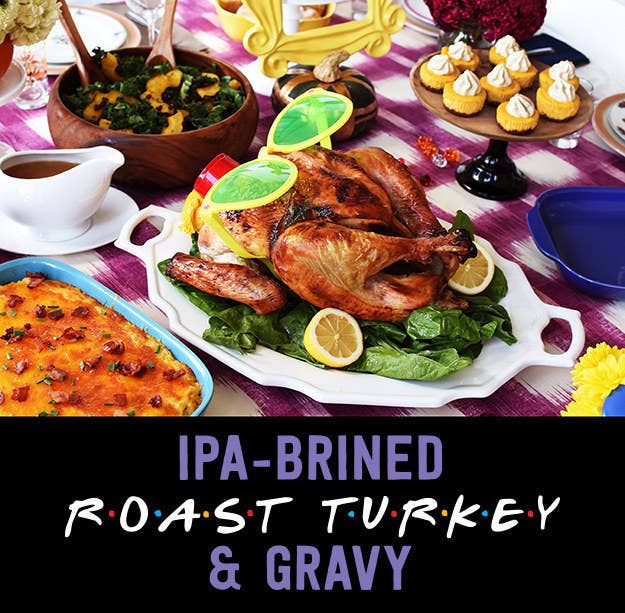
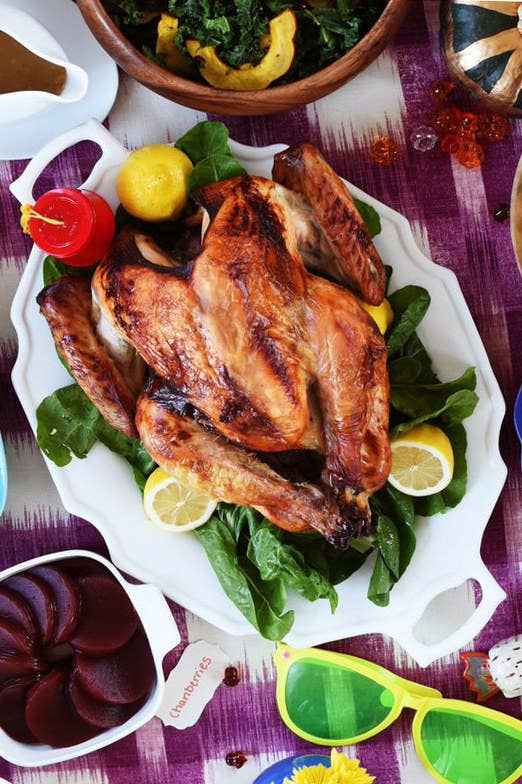
To brine and roast the turkey you will need:
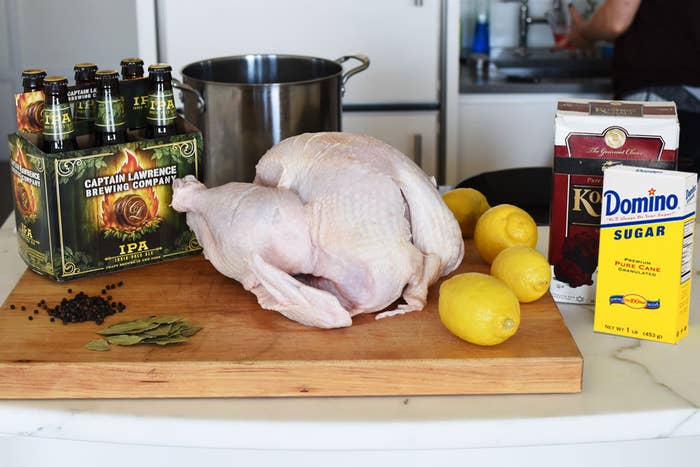
To make the gravy, you will need:

You'll also need a turkey roasting pan (ideally with a rack) and 5-gallon cooler to brine your turkey.
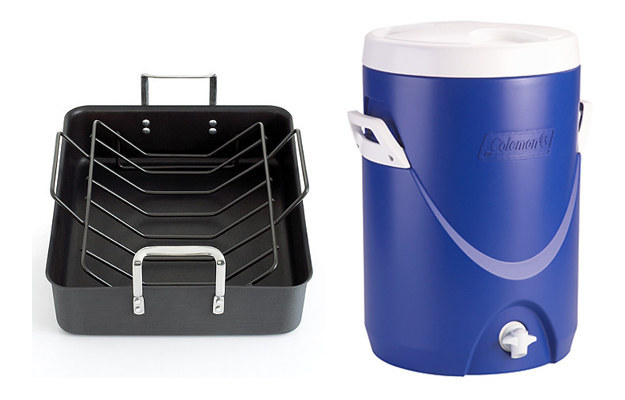
**YOU NEED TO BRINE YOUR TURKEY AT LEAST 48 HOURS IN ADVANCE.**
To start the brine, combine the peppercorns, bay leaves, salt, sugar and 12 cups of water in a large pot.
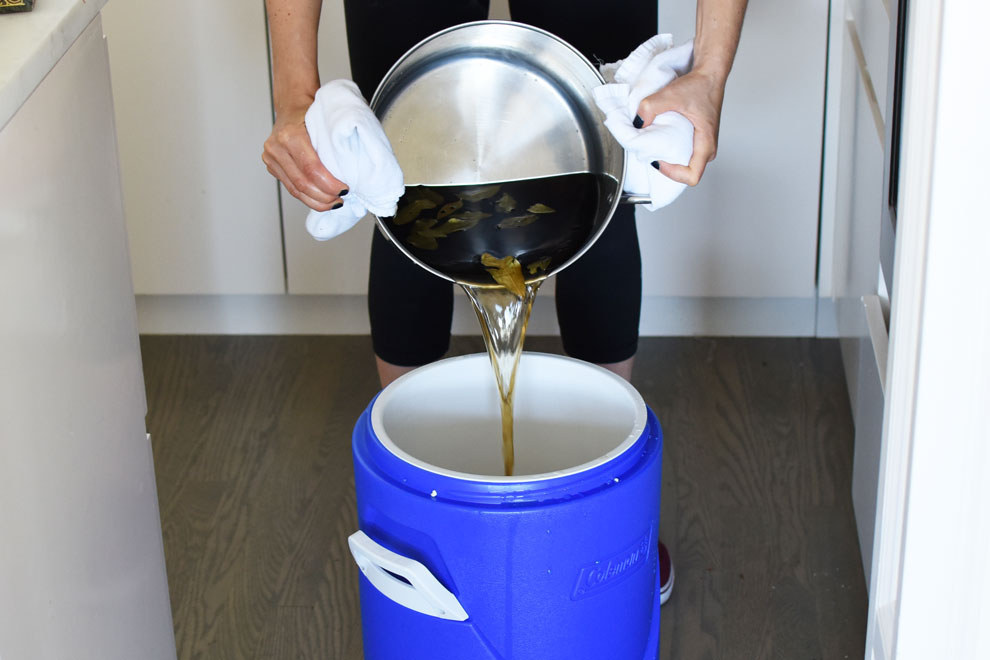
Then, add the beer and 8 cups (2 quarts) of cold water.
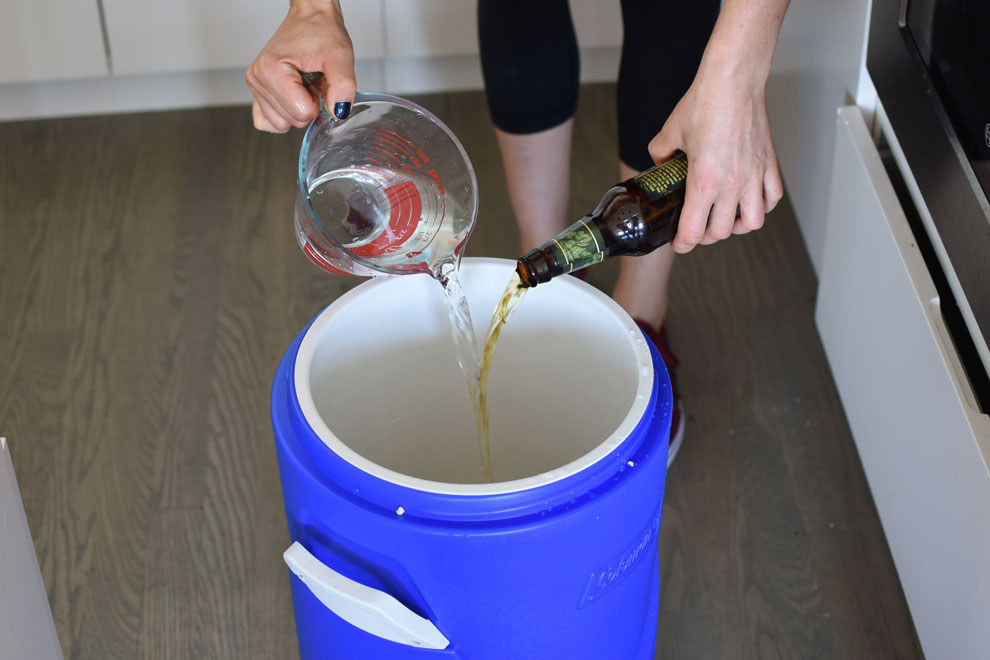
Gently lower the turkey into the cooler, legs up.

Add the lemon halves. If you need more liquid to cover the bird, you can add up to 8 more cups of water.
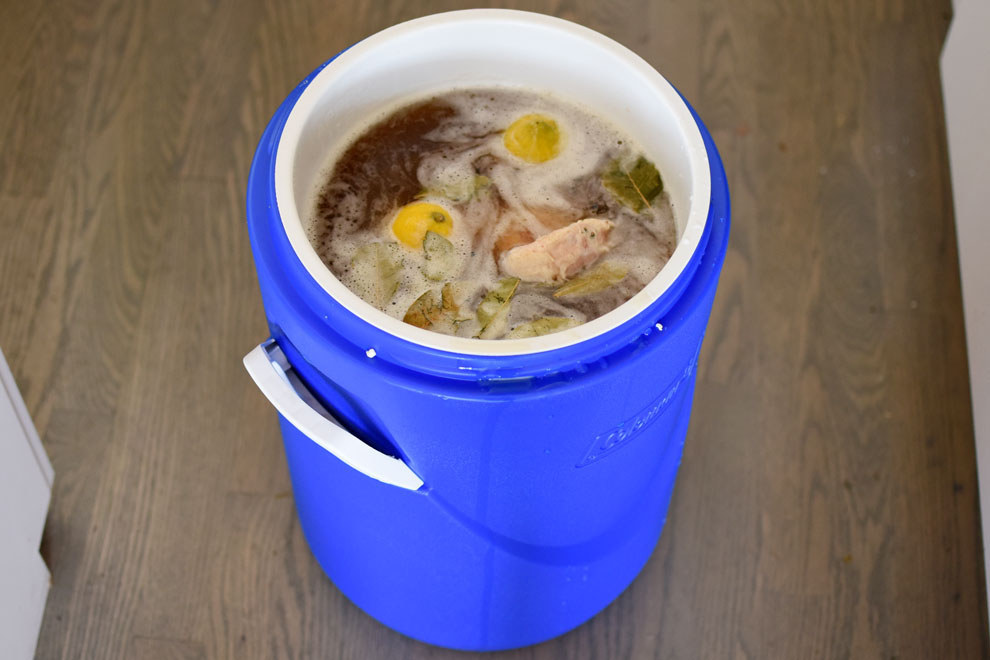
Cover the cooler, put in in the fridge, and let the brine work its magic for 48-72 hours. When it's ready, carefully lift the turkey out of the brine and set it on a paper towel-lined cutting board.

Preheat your oven to 500°F, then dry the turkey really really thoroughly with paper towels.
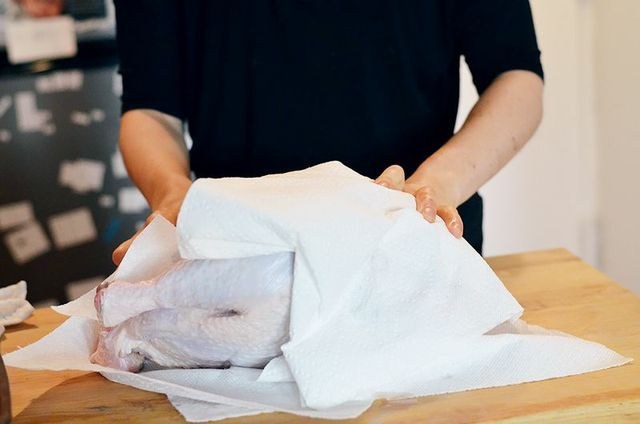
Make sure you dry well inside the cavity as well!
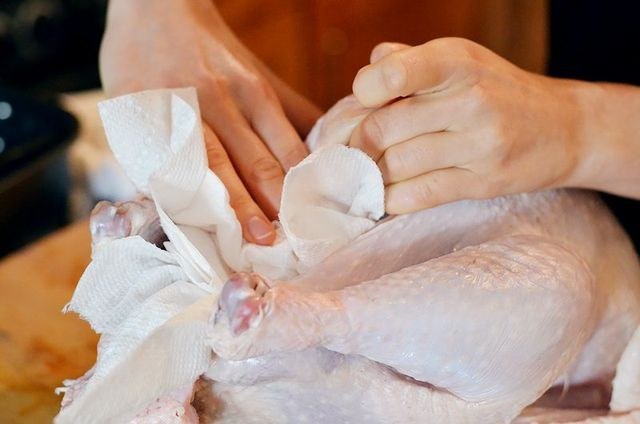
When the turkey is dry, transfer it to the roasting rack and let it sit for 45 minutes to come to room temperature. Flip it breast-side down and pour about 1/2 cup of canola oil on top then rub it in all over the skin.
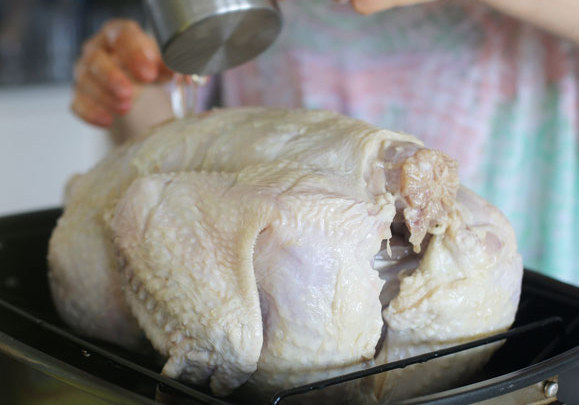
Flip the turkey so that it's breast side up, pour on the remaining 1/4 cup of oil, then rub it into the skin on the breast.
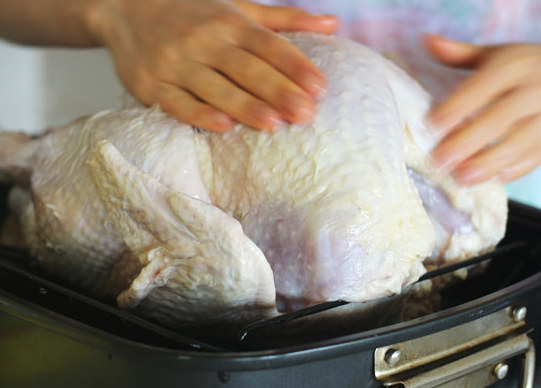
Next, tuck both the wings: Pull the tip of the wing up and close to the body...

... then force the wing tip underneath the turkey's back so that they are folded and stay in place.
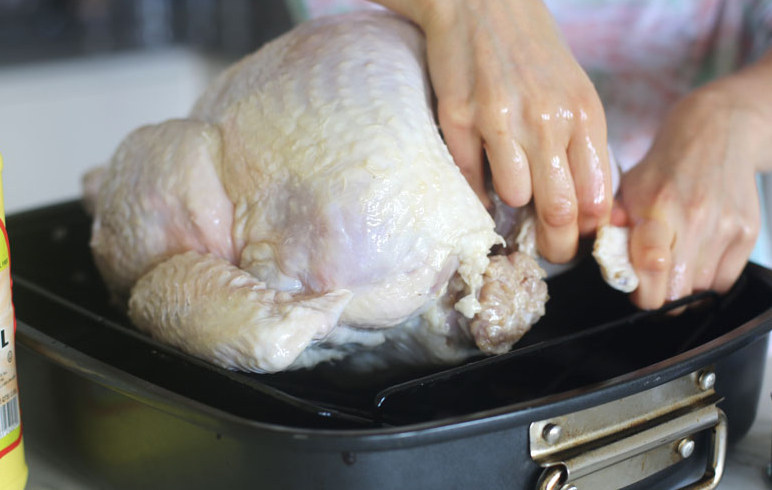
Criss-cross the legs of the turkey so that they're as close together as you can get them, then tie the ends of the legs together with twine.
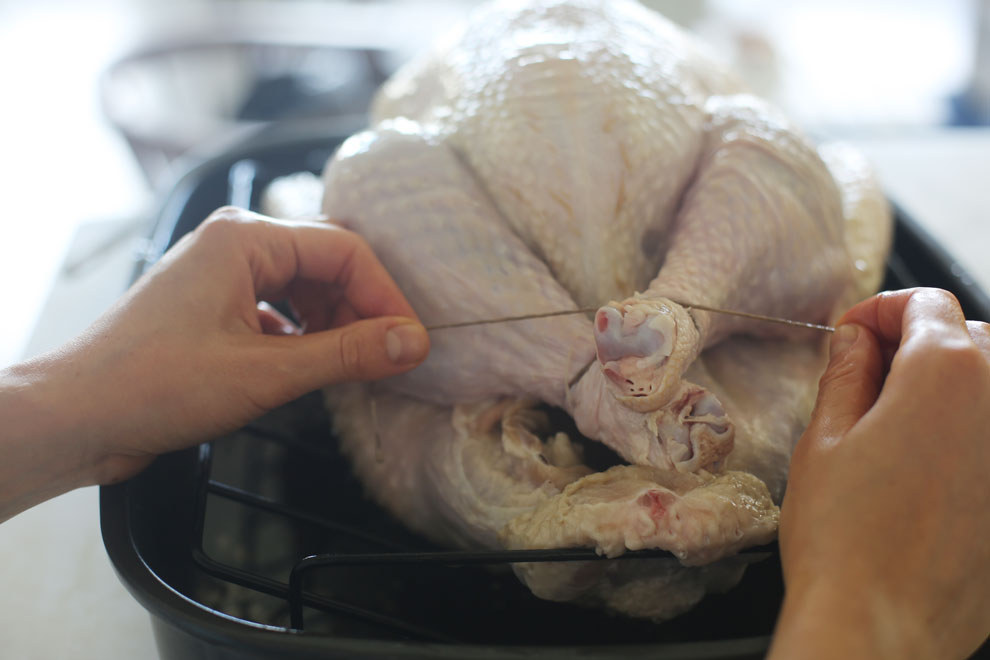
Your turkey should look like this.
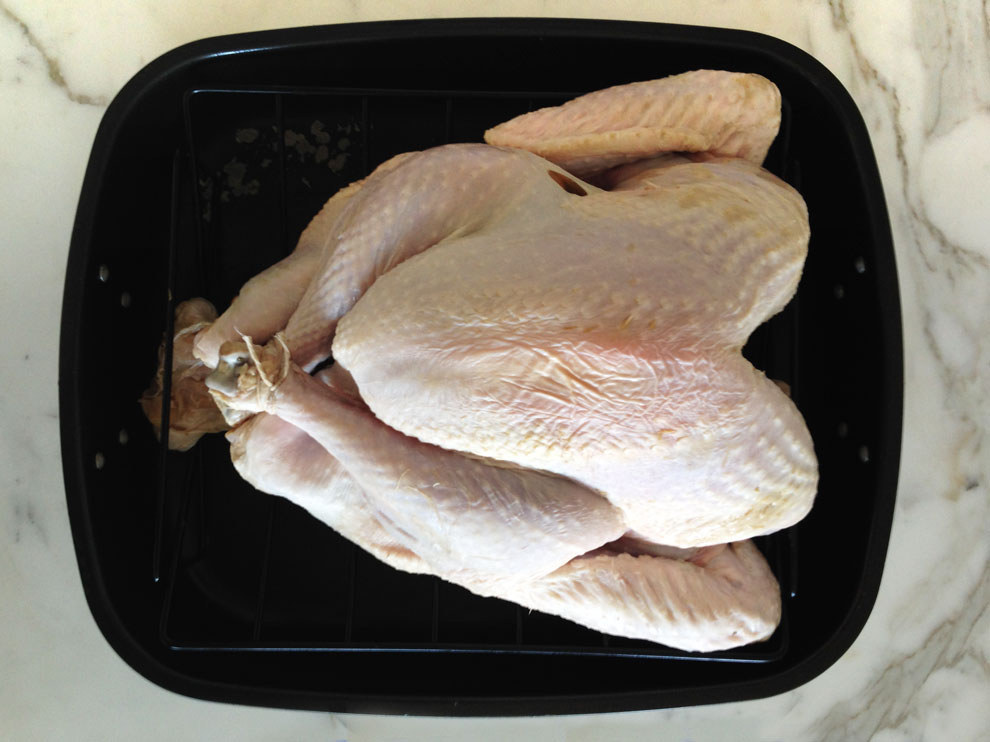
Add a cup of water to the pan (do NOT pour it on the turkey! You want the turkey dry) to keep the drippings from burning.
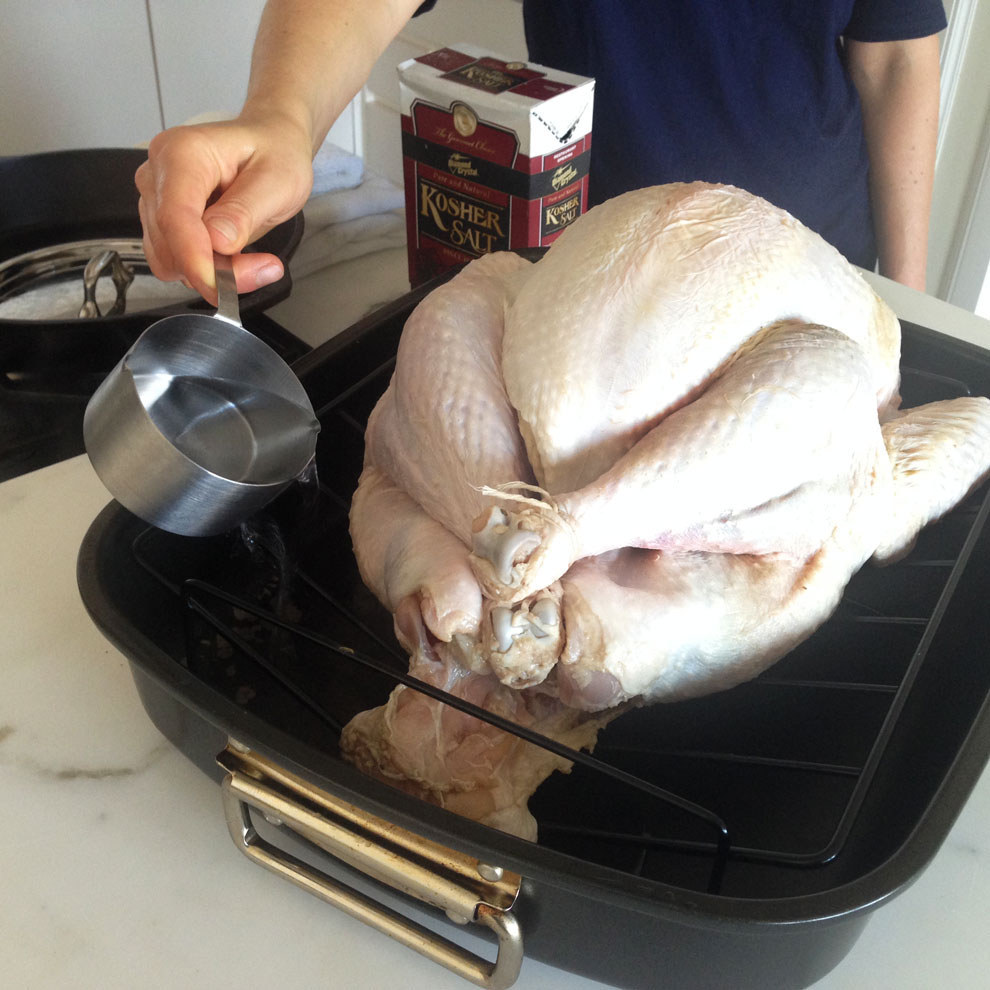
Roast the turkey at 500°F for 30 minutes, to help crisp the skin. If the skins starts to get too dark, cover the dark spots with foil.
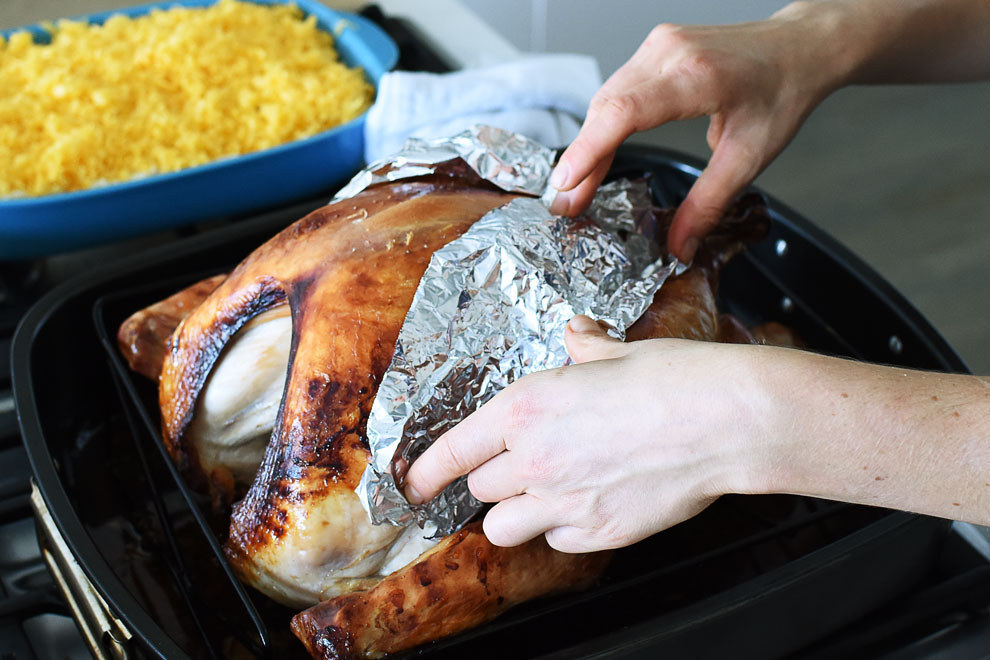
Reduce the oven temperature to 350°F, then roast for another 2 hours.
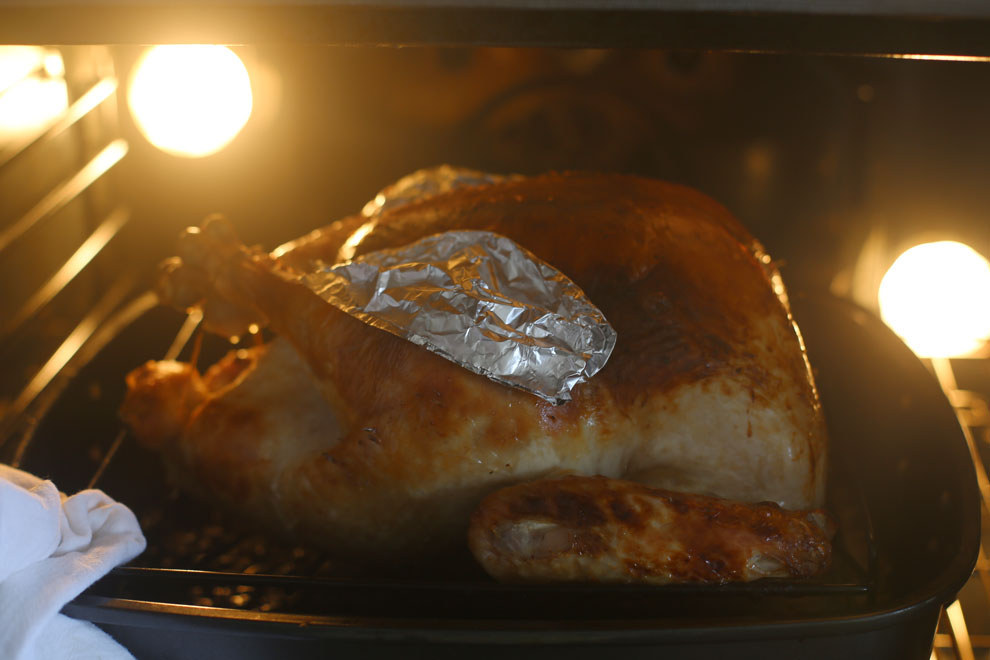
After 2 hours, take the turkey out of the oven, insert a meat thermometer deep into the turkey, right where the breast meets the thigh. If it's not at 165°F, roast it for another 15 minutes then check again.

When the thermometer reads 165°F, let the turkey rest on a cutting board while you make the gravy.
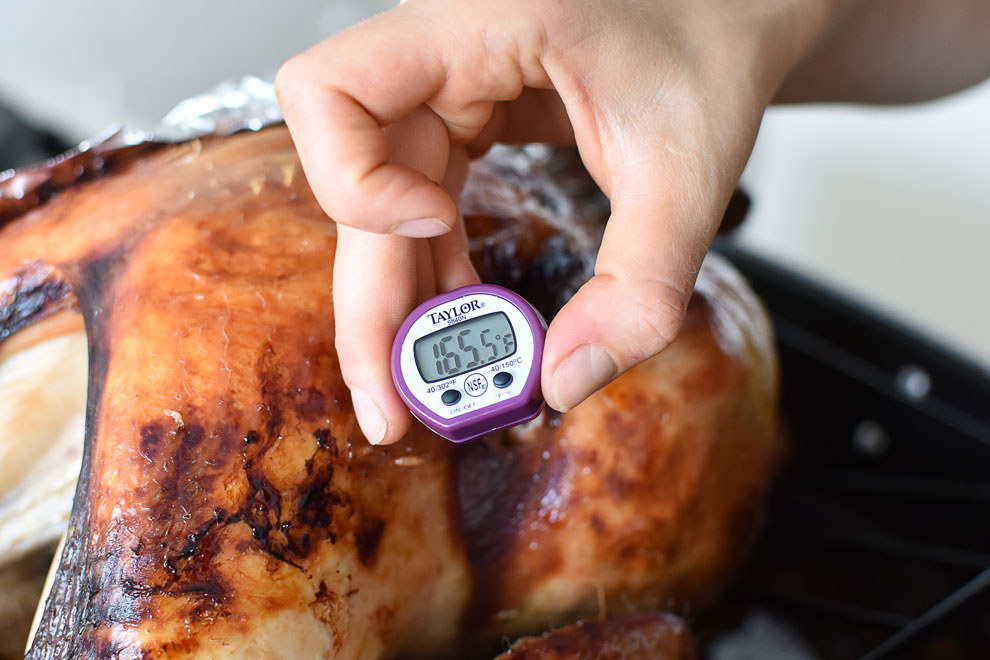
For the gravy, you'll use the magically delicious drippings at the bottom of the turkey roasting pan.

Use a spatula to strain the drippings through a fine mesh strainer and into a bowl.
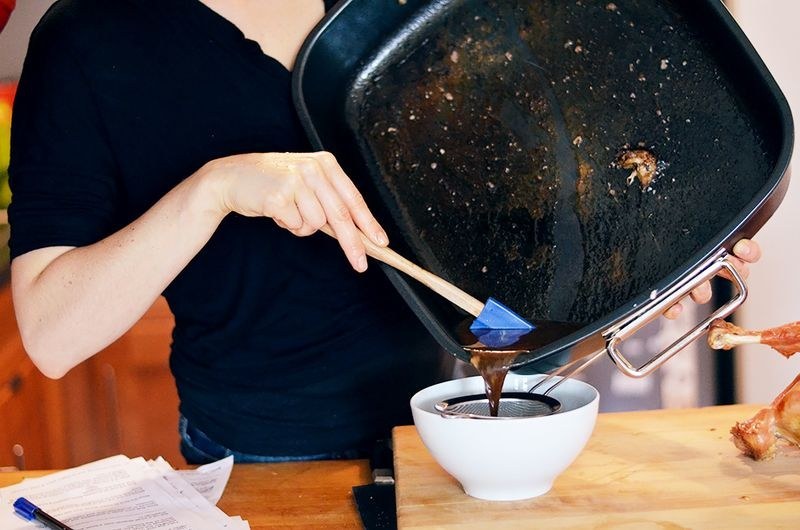
Transfer 1 cup of the strained drippings to a medium saucepan over medium heat.
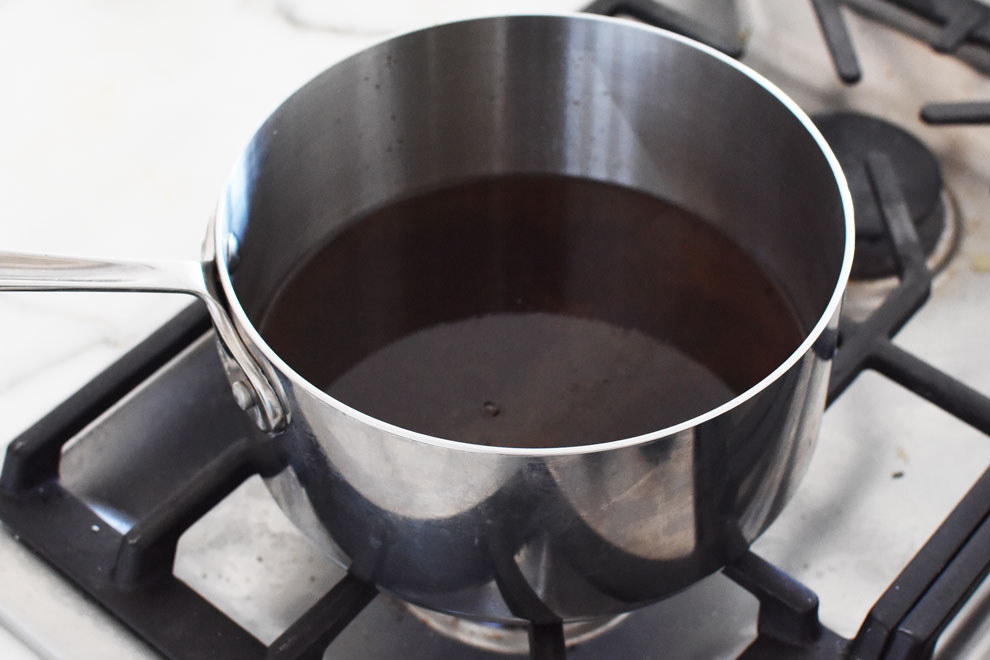
Bring the drippings to a rolling boil.
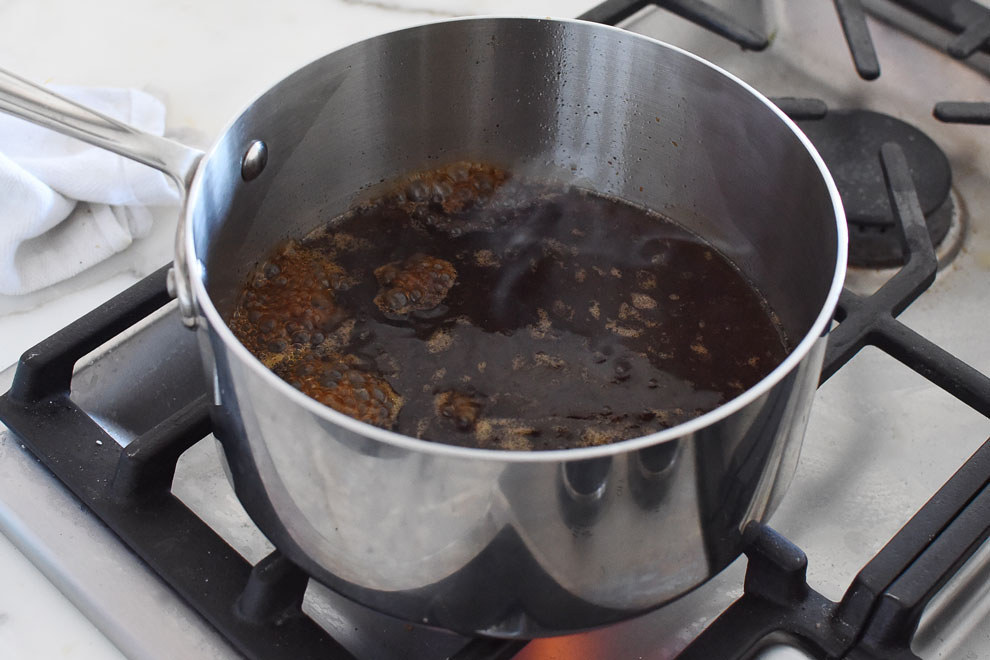
Sift in the flour, all at once, whisking vigorously as you do it.

Keep whisking the mixture over medium heat. If you stop whisking, you might end up with lumpy gravy.

In about 2 minutes, much of the liquid will have evaporated, and you'll be left with a sticky brown paste. You want it to look like this:
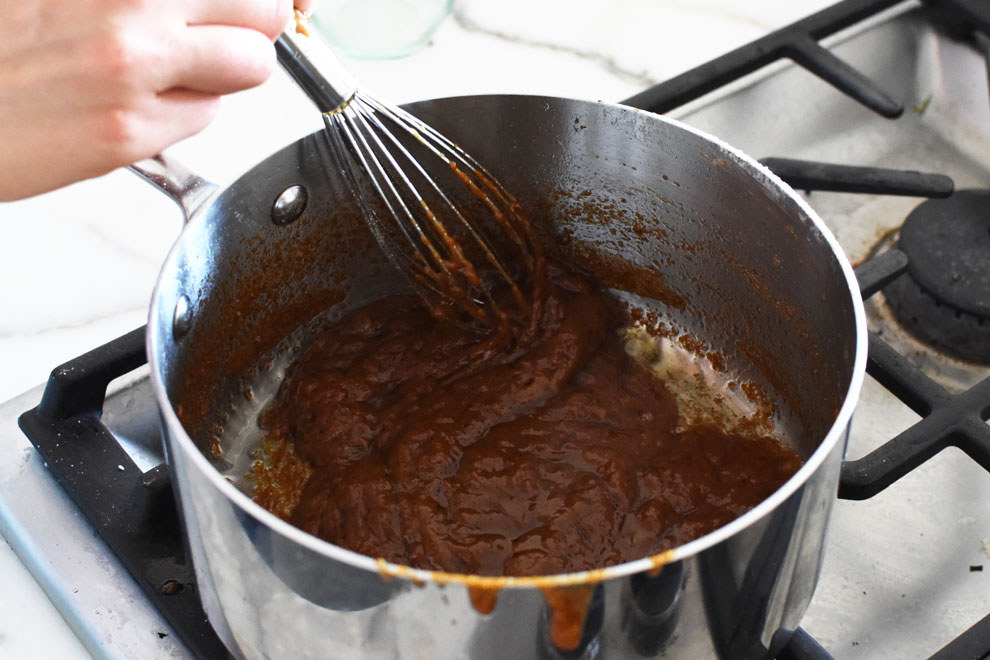
Next, slowly add the 3 cups of chicken stock, whisking vigorously the entire time.
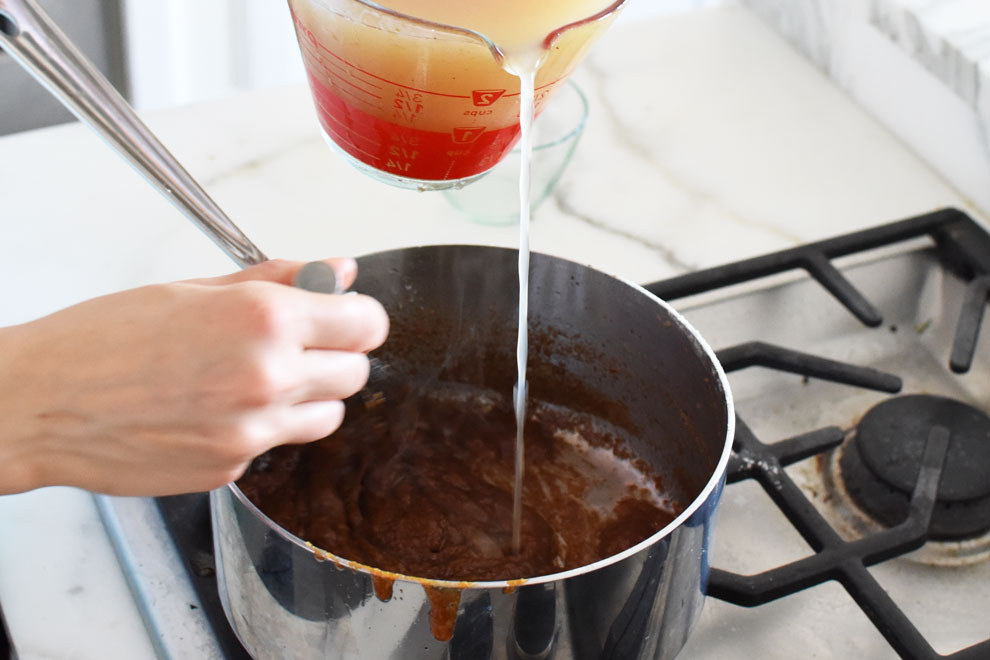
Bring the mixture to a boil, then reduce the heat to low and let the gravy simmer for about 5 minutes, until it's thick.
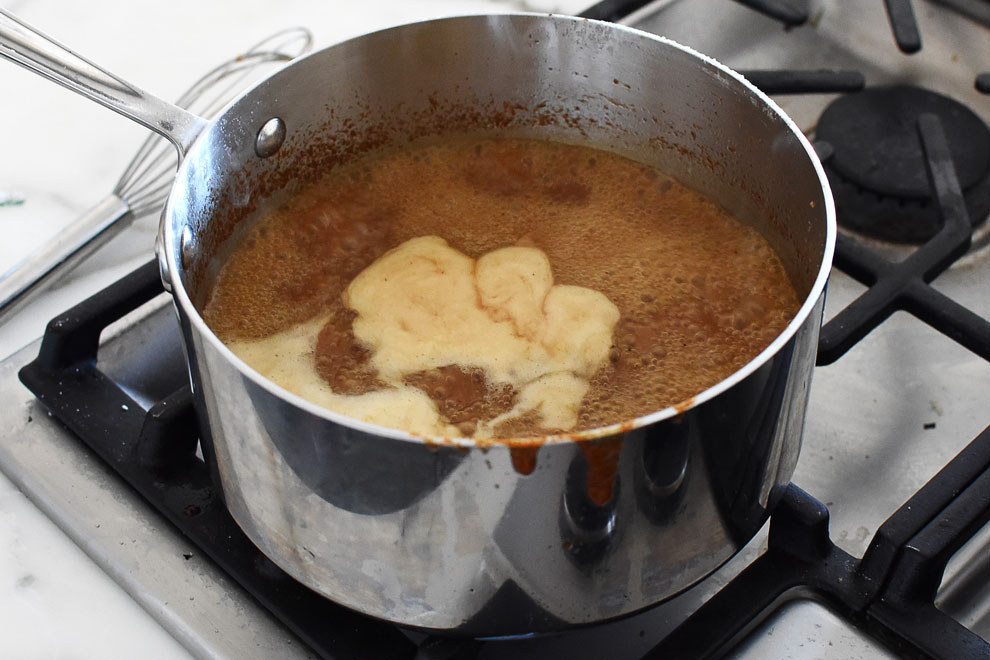
When you dip a spoon into the gravy and run your finger down the spoon, the gravy should be thick enough to NOT run through the trail. This is how you know it's done.
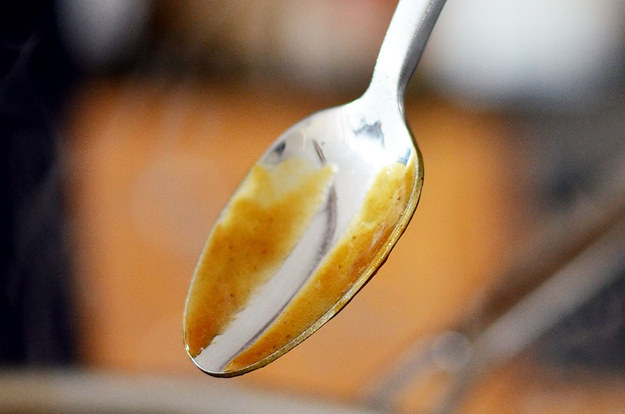
Season to taste with salt and pepper then transfer it to a gravy boat.
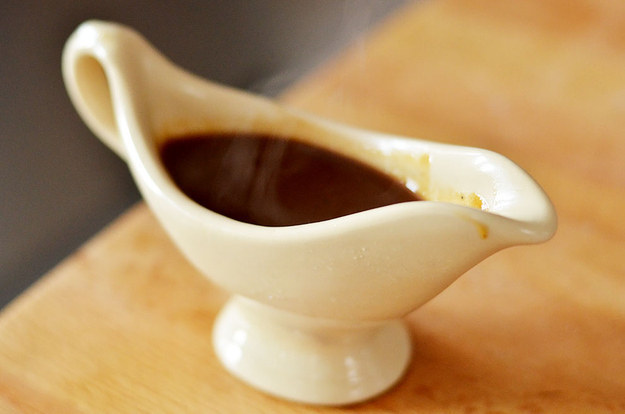
IPA-Brined Roast Turkey and Gravy
Serves 12
INGREDIENTS
For the turkey:
2 tablespoons black peppercorns
8 bay leaves
1 cup granulated sugar
1 ½ cups kosher salt
6 12-ounce bottles IPA
12-14-pound turkey
4 lemons, cut in half
1/2 to 3/4 cup canola oil
For the gravy:
Turkey drippings from the turkey roasting pan
1/3 cup all-purpose flour
3 cups low-sodium chicken broth (or turkey stock)
kosher salt and freshly ground pepper
Special equipment:
Very large (at least 5-gallon) bucket, pot, or cooler, for brining
Room in the fridge for that very large bucket, pot or cooler
Turkey roasting pan with a rack
Meat thermometer
PREPARATION
For the turkey:
1. In a large pot, combine peppercorns, bay leaves, sugar, salt, and 12 cups of water. Boil the mixture until the sugar and salt are completely dissolved. Remove from the heat and let it cool to room temperature.
2. When the mixture has cooled, pour it into your brining container. Add the IPA and 8 cups cold water. Submerge the turkey completely in the brine, then add the lemon halves. (If it's not all the way covered, add up to 8 additional cups of water.) Cover and refrigerate for 24-36 hours.
3. An hour before you're ready to roast your turkey, remove it from the brine, pick off any peppercorns or bay leaves, and pat it as dry as possible with paper towels. Place the turkey breast side up in a large turkey roasting pan with a rack. Let the turkey sit on the counter for at least 30 minutes before roasting.
3. Preheat oven to 500°F and position a rack on the bottom shelf. Make sure there's enough room for your turkey; take all the other racks out if you have to. When you're ready to roast, rub canola all over your turkey, coating all of the skin. Tie the legs together with butcher's twine and tuck the wing tips behind the back. Add a cup of water to the pan and roast the turkey for 30 minutes at 500°F. (Starting the turkey at a super high temperature makes for crispier skin.) After 30 minutes, turn the oven down to 350°F and continue to roast the turkey for 2 to 2 ½ hours, turning the roasting pan after an hour, until a thermometer inserted into the thickest part of the thigh (right where the thigh meets the breast) reads 165°F. When the turkey is done, transfer it to a carving board to rest while you make your gravy.
4. When the gravy is ready, carve your turkey: The easiest way to carve a turkey is to quarter it first — meaning you cut the legs off first, then cut each breast off of the turkey carcass — then slice it into pieces. For a step-by-step GIF guide click here.
For the gravy:
1. Set up a small strainer over a medium bowl, and pour what's left in the turkey pan (a.k.a. the pan drippings) through the strainer and into the bowl. No need to scrape the bottom of the pan, just pour whatever comes out easily. When your pan drippings are strained, measure out 1 cup and throw the rest away.
2. In a medium saucepan, heat the 1 cup of pan drippings over medium heat until they are bubbling gently. Whisk the drippings. While you're whisking, use a small mesh sifter or strainer to sift the flour all at once into the bubbling pan drippings, continuing to whisk the mixture together so that the flour doesn't get lumpy. Keep whisking until the mixture gets smooth and sticks loosely together, about 3 minutes.
3. Keep whisking and slowly add the stock in a steady stream. Continue to whisk until all of the stock is incorporated. Then bring the gravy to a boil. Once it boils, lower your heat so that the gravy is barely simmering. Let the gravy simmer until it's thick enough to coat the back of a spoon, about 10 minutes, or to your desired consistency. Season to taste with kosher salt and freshly ground pepper.
4. To serve, pour the gravy into a gravy boat or small bowl. Cover the gravy with plsatic wrap, pressing the wrap onto the surface of the gravy so it doesn't form a skin, and cover with foil until you're ready to serve.
And because a bad carving job can ruin a perfectly good bird, check out our step-by-step guide to How To Carve A Turkey.

Planning to cook this recipe?
That's awesome! The BuzzFeed food editors want to know how things turn out in your home kitchen. Take a picture of your finished dish, post it to Instagram or Twitter, and tag it #BuzzFeedFriendsgiving.
